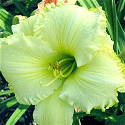-
when pollinating, mark the pollinated flower with a weather-proof label (paper is not recommended; plastic labels are much better on which a number or some characters can be noted and be attached to the pedicel of the pollinated flower via a thin cord)
-
if you want to increase the chance that the pollen grains are not eaten by e.g. the hoover flies after pollination, protect the stigma e.g. with a cylinder hat out of tin foil (this also protects against pollination with other pollen)
-
keep track of your pollinations in a log-book with e.g. the following information (date, internal number/characters written on the label of the pollinated flower, pod parent, pollen parent and maybe intent of the cross)
-
as not every pollination is successful, repeat the same pollination on several flowers (hopefully a few will produce some seeds)
-
do not pollinate everything with everything; please make first your thoughts what traits you like to combine or what results you like to get (also sometimes these "lucky pollinations" can produce nice or unpredictable results)
-
if the plants which you like to pollinate do not flower at the same time, you can also store pollen and use it later (please see also
HE pollen exchange for further info)
-
do not mix the seeds of different pods; maybe despite having them pollinated with the same parent pollen,
they may have different pollen on them due to hover flies which eat the pollen but may also accidentally put other pollen on the stigma
-
set a few goals before starting with hybridization and do not change them every few years;
professional hybridizers stick to their goals for many years, that way they produce breeding lines for these goals and get with every new generation closer to the goal
-
do not sow the seeds too closely especially if you have enough room; it is difficult to separate young seedlings without hurting them too much (the closer they are the more difficult it is;
the longer you wait to separate them, the more roots will be violated; if the seedlings already started to have more than one fan, it is no longer clear if a fan belongs to this or that seedling)
-
do not throw away a seedling after the first year of flowering; the very first flower as well as the first year of flowering may not show how it really looks like when the plant is really mature in the following year(s);
the changes in the following year(s) maybe to the positive as well as negative side; please note that unusual forms may not be seen in the first year of flowering and that first years flower have normally smaller segments (i.e. tepals)
-
if you have produced a seedling which you like to introduce, please register it at the AHS (= American Hemerocallis Society);
even if you do not plan to make money with this seedling, the money is well invested especially with every additional information which is delivered for the registration (parents, branching, number of buds, ...);
you as a potential professional hybridizer also like to have this information for the plants with which you hybridize
(for registering a seedling, please see http://www.daylilies.org/AHSregister.html)
|

